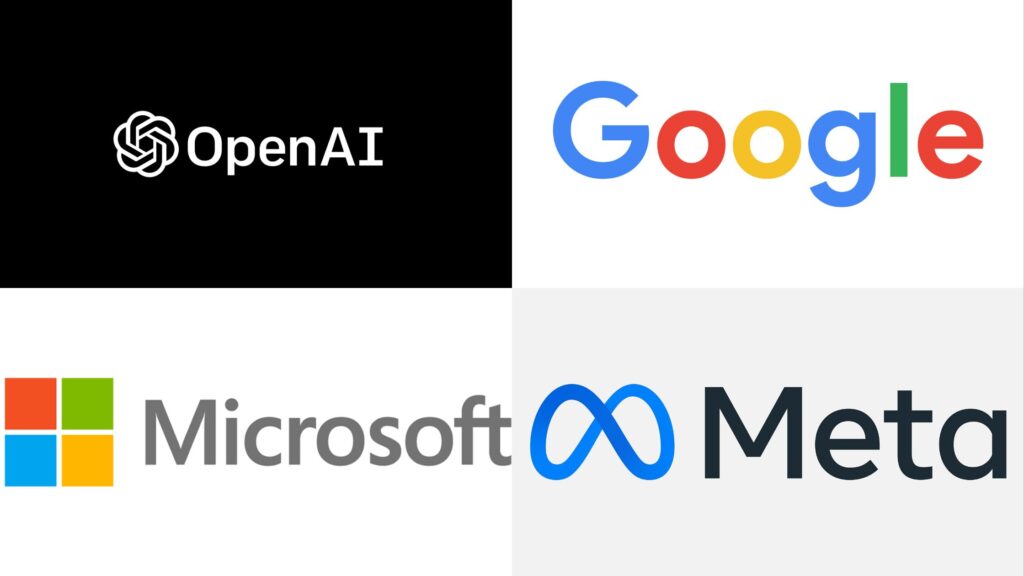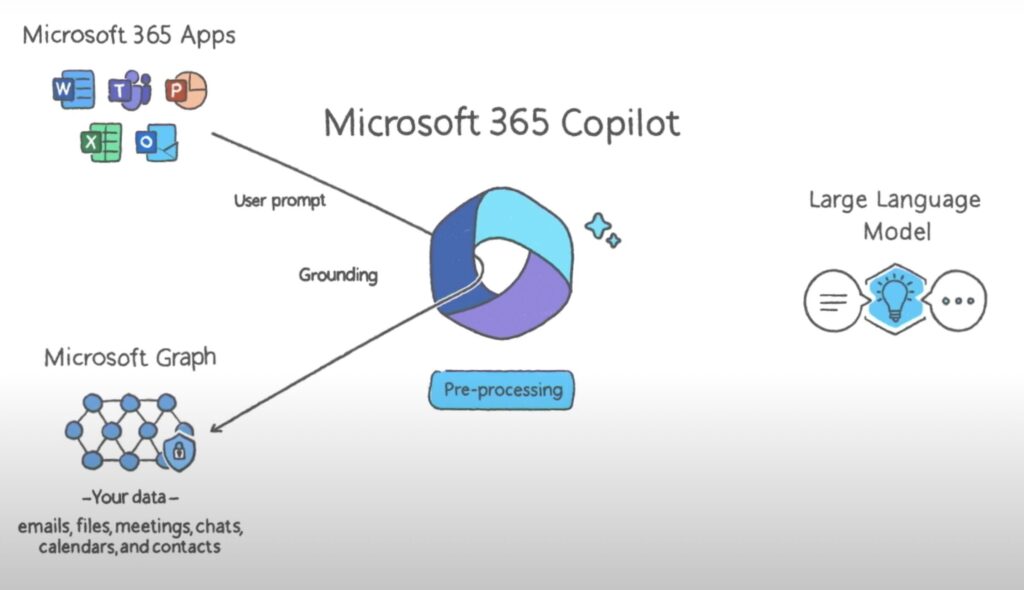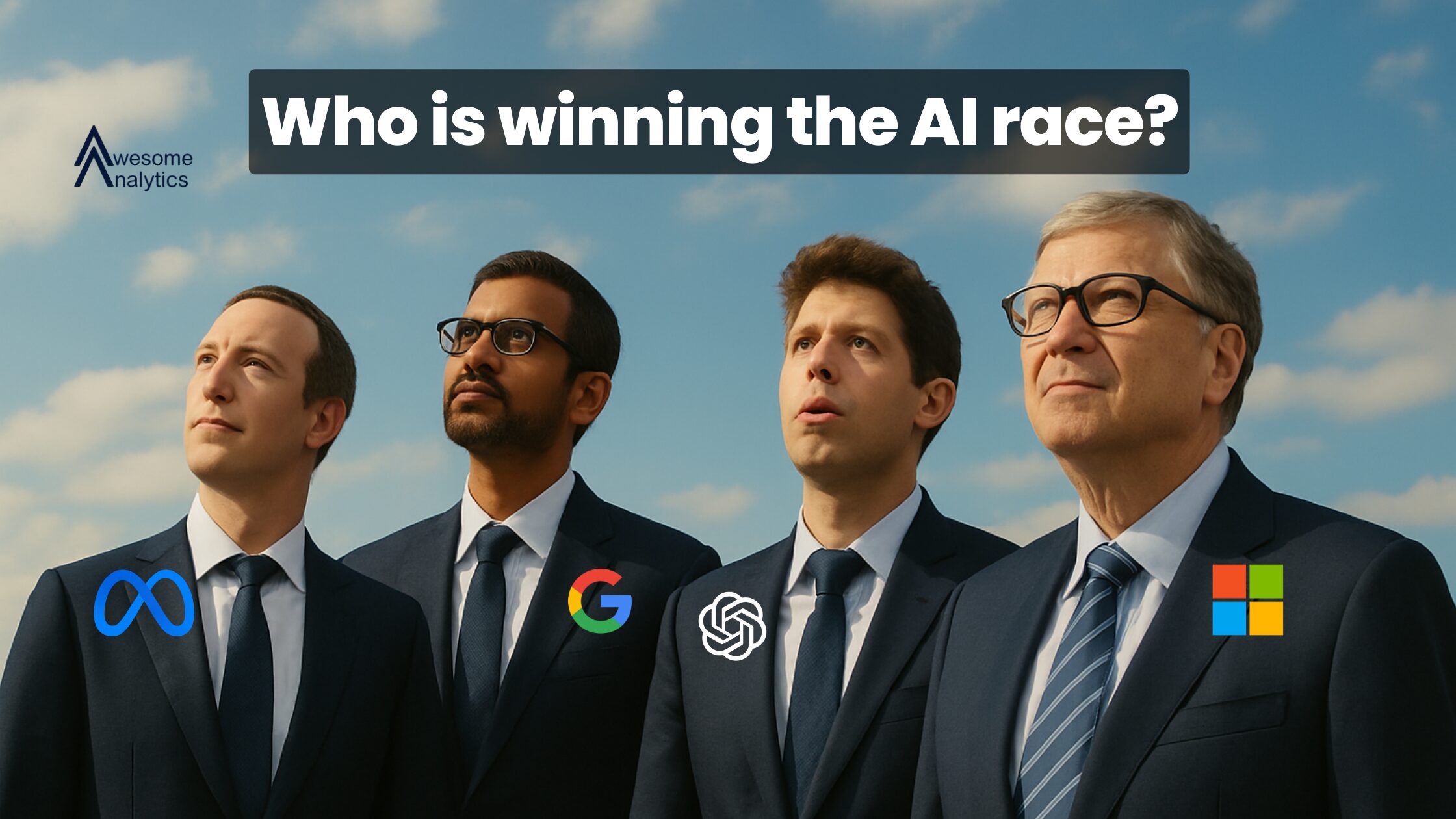1. Innovation
Call: OpenAI leads on frontier model pushes in 2025, with GPT 5 now live. That includes stronger reasoning tiers and visible progress toward agent-style use cases.
Notes
- Microsoft benefits here by bringing GPT 5 into its stack quickly, which blurs the line between model maker and model distributor.
- Google continues to ship fast with Gemini 2.5 Pro experiments and Canvas, which matters for coding and creation workflows.
- Meta pushes open models with Llama 4, which is a big deal for teams that want control and low cost.
What this means for you
If you need the newest reasoning and agent ideas for pilots, OpenAI is the first stop. If you want open weights or custom hosting, Meta’s path is attractive.

2. Adoption
Call: Two leaders for different worlds. OpenAI leads consumer use by a wide margin, while Microsoft leads enterprise usage in daily work.
Notes
- Third-party estimates show ChatGPT with very large traffic and weekly users in 2025, with Similarweb ranking chatgpt.com among the top sites and external trackers citing hundreds of millions of weekly users. Treat all estimates with care, but the direction is clear.
- Microsoft has Copilot available across markets and platforms, from web to Windows to mobile, which places AI inside the tools people already open all day.
- Google shows steady growth for Gemini and keeps shipping features inside core products, which lifts casual use and education use.
- Meta reaches people through WhatsApp, Instagram, and the Meta AI app, which gives a huge surface area in chats and social.
What this means for you
For broad workforce rollout, OpenAI & Microsoft win on reach.
3. Integration
Call: Microsoft leads on integration. Copilot sits inside Microsoft 365, Windows, Power BI, GitHub, and Azure, and it has adopted GPT 5 quickly.
Notes
- Google is close behind with Gemini features in Workspace and Android, plus new guided learning and image tools in Docs.
- Meta integrates AI across WhatsApp and the Meta AI app, which makes everyday chat tasks smarter without new software installs.
- OpenAI integrates through partners and the ChatGPT app. The core product remains a destination app, though connectors and API use are growing.
What this means for you
If your board asks for a short payback period, Microsoft’s Copilot is easiest to map to licenses and time saved. OpenAI is strong where API based products or agent pilots drive new value.

5. Safety and trust
Call: Mixed picture. OpenAI has visible safety work with GPT-5, yet outside tests still find issues, which shows how hard safety remains even for the leader. Use this as a nudge to keep governance simple and clear.
Notes
- Microsoft leans on enterprise controls and admin policy inside Copilot Studio and Microsoft 365, which helps IT teams manage risk.
- Google adds privacy focused features like temporary chats in Gemini, helpful for teams that want session controls.
- Meta supports open models through major clouds, so your own guardrails matter even more when you host and tune them.
What this means for you
For strict policy and admin controls, Microsoft and Google are the easiest. For full control and tuning, Meta’s open path is flexible but needs discipline.

Scorecard and positions
- Innovation. OpenAI first, Microsoft second, Google third, Meta fourth. GPT 5 sets the pace, Microsoft ships it everywhere fast, Google keeps improving Gemini, and Meta drives open progress.
- Adoption. OpenAI for consumer scale, Microsoft for enterprise reach. Google and Meta grow through installed products and chats.
- Integration. Microsoft first, Google second, Meta third, OpenAI fourth, for a native footprint in everyday tools.
- Monetization. Microsoft first, OpenAI second, Google third, Meta fourth.
- Safety and trust. No runaway leader. OpenAI shows both progress and gaps, Microsoft and Google have admin and policy depth, and Meta puts power in your hands.
Conclusion
There is no single crown; there are clear lanes. For daily work and quick payback, pick Microsoft first. For cutting-edge experiments and consumer reach, pick OpenAI. For deep Workspace or Android ties, pick Google. For control, cost, and custom hosting, pick Meta.
The right answer is the one that moves your process this quarter. If this helped, subscribe to the newsletter so you never miss the next checkpoint in your AI journey.



